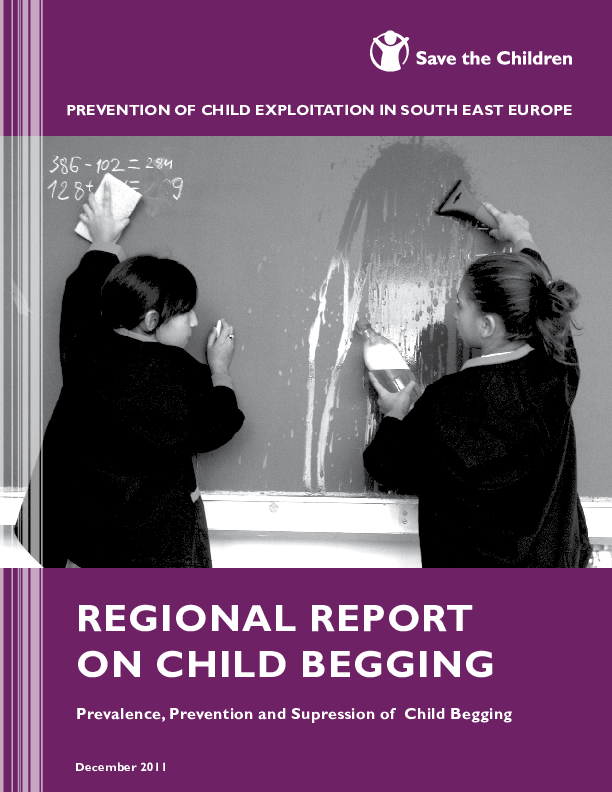
Reports, Study: Research
Regional report on child begging. Prevalence, prevention and supression of child begging. Prevention of child exploitation in South East Europe
Publication year:
2011
English
Format:
pdf (1.7 MiB)
Publisher:
Save the Children
Begging, as a social phenomenon, is public, visible and undisguised. Most child beggars exist in major cities and have almost become one of their distinctive features. Although they can be regularly seen on city squares, traffic roads and crossroads, in front of shops and in parks, these children are largely invisible for the system and the society. Little is known about their origin, life, family and social statuses, while the underlying causes of their being involved in begging activities are usually not subject to research, nor are they being systematically dealt with.
During the first half of the year, Save the Children Norway SEE together with four members of the South East Europe Children’s Rights Ombudspersons’ Network: Provincial Ombudsman of the Autonomous Province of Vojvodina, Ombudsman for Children of the Republika Srpska, Ombudsman of the Republic of Montenegro and Ombudsman of the Republic of Serbia – conducted a research to collect data on prevalence and principal characteristics of the child begging phenomenon in the SEE Region. The research sets out priorities and gives recommendations to all of the stakeholders in the area of child begging, with an aim to protect numerous children subject to such exploitation.
Read full abstract
Authors
View & Download
Document information
Publisher
Authors
Format
Content type
Region
Rights
© Author/Publisher
Found a mistake? Help us improve!
If you have noticed a document assigned to the wrong author or any other inaccuracies, let us know! Your feedback helps us keep our data accurate and useful for everyone.
Share
Link
